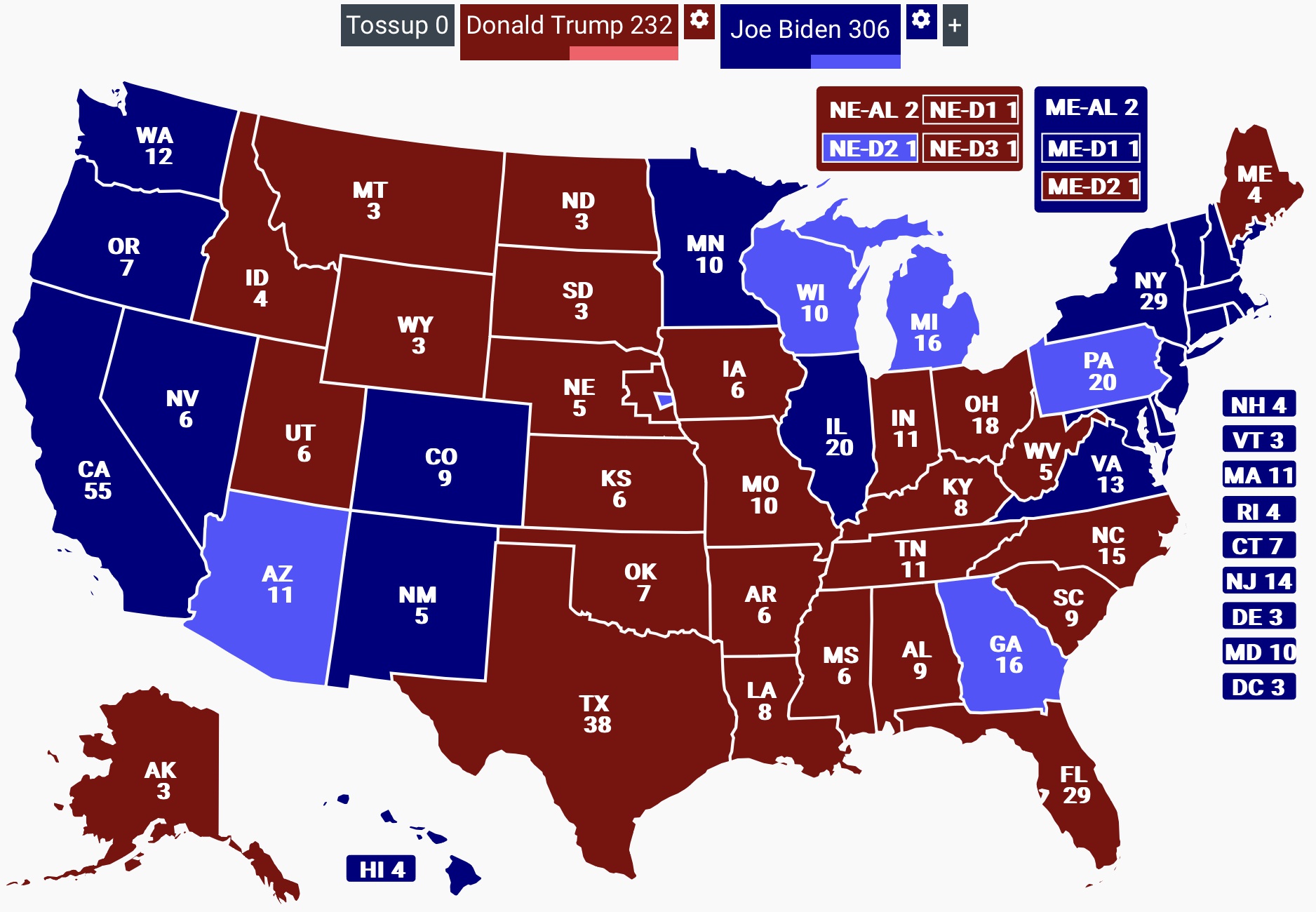The week’s topic is the sixth and last on electoralism as related to next year’s United States presidential election. There is plenty more to consider. But, I will move on from this beginning next week. And, for what more I want to address, I will return to some more electoral-related topics when we are in 2024.
This blog topic is published a full 52 weeks from the [Tuesday,] November 5, 2024 United States presidential election.
Election 2024 will be the 60th quadrennial United States presidential election. The first was in 1789. We have had U.S. presidential elections with leap years since 1792.
To make any predictions a year in advance can be interesting…just to see, once that time arrives, whether anything predicted a year out actually materializes.
I do not feel, not at this time, any strong sense of which of these two major United States political parties will prevail. I consider Inflation. I consider the Ukraine War. I consider the Israel–Hamas Conflict. I consider Abortion. And there are other things I consider.
While Democratic incumbent Joe Biden has a job-approval rating which is struggling for 40 percent so, too, did a 2011 Barack Obama and a 2019 Donald Trump one year in advance of their coming elections. In each case—re-election for Obama; unseating for Trump—the results were different.
My sense is that Election 2024 is a Tossup.
Tossups.
Tossups for the Trifecta: U.S. President, U.S. Senate, and U.S. House.
I will explain.
A review of the most recent election cycles:
 |
| ELECTION 2020: Solid shades are 2016-to-2020 party holds. Light shades are 2016-to-2020 party pickups. |
• 2020 U.S. Popular Vote: Democratic [Biden] 51.26%
• 2020 Consideration: A map with 25 carried states, with 50 percent of the nation’s states, and 306 electoral votes. The 2016 Democratic-carried states held. (They were worth, at the time, 232 electoral votes.) Pickups, as indicated on the above map in a light shade, and in order of best-performed were: Nebraska’s 2nd Congressional District; Michigan (party’s No. 20 best state at a cumulative 243 electoral votes); Pennsylvania (No. 22 best state at 269 electoral votes); Wisconsin (No. 23 best state—and the Tipping-Point State—at 279 electoral votes); Arizona (No. 24 best state at 290 electoral votes); and Georgia (No. 25 best state at a cumulative 306 electoral votes)
• 2016 Donald Trump and 2020 Joe Biden Common Bonds: They both carried two states beyond their Tipping-Point State (in both cases it was Wisconsin). Trump carried 30 states and his Tipping-Point State, his 28 best state at 270 electoral votes, was followed by two additional pickup states to finish with the same original electoral-vote score as Biden. Both a 2020 Trump and a 2024 Biden had/have this position: Lose anything carried on the map…lose one’s bid for re-election
• 2024 Rating (11.06.2023): Tossup
U.S. Senate
• 2022 Outcome: Democratic [Hold for Majority] 51 seats
• 2022 Percentage of Seats (Established Thereafter): Democratic 51.00%
• 2022 Consideration: Under Joe Biden’s presidency, the midterm elections of 2022 marked the first time a Democratic-affiliated president’s party held every seat with re-elections for all their incumbent senators since 1934 Franklin Roosevelt
• 2024 Rating (11.06.2023): Tossup
U.S. House
• 2022 Outcome: Republican [Pickup for Majority] 222 seats
• 2022 U.S. Popular Vote: Republican [Pickup] 50% to 51% (conflicting numbers by Wikipedia)
• 2022 Percentage of Seats (Established Thereafter): 51.03%
• 2022 Consideration: While the White House opposition Republican Party won the overall net gains in seats in Congress, with the 2022 midterm elections, they underperformed historic norm. They went in with 213 U.S. House seats and won a national average of +1.5 seats with each nationally shifted percentage point (from 2020). Normal level is between +3.5 to +4. The 2022 U.S. House Republicans should have ended up with 234 to 237 seats. In increments of five, they should have reached 235. They didn’t even arrive at 225
• 2024 Rating (11.06.2023): Tossup
Conclusion
There are plenty of historic facts to point out. One such example is this: Since 2000, the party which won the U.S. Popular Vote for U.S. House also prevailed for U.S. President. Another such example is this: When one or both houses of Congress switches party control, in what is also a United States presidential election, the pickup party is the same party which also won at the level of U.S. President. (This just happened in 2020 with Democratic pickups for both U.S. President and U.S. Senate.) And I think a number of the long-established patterns will, once again, hold with the overall outcome of Election 2024.
At this time, I don’t feel confidence with predicting either a Democratic hold or a Republican pickup of the presidency of the United States in 2024. The U.S. House Republicans are vulnerable. The U.S. Senate Democrats are vulnerable. The Democratic-affiliated, incumbent United States president—and, with that, the White House party—is vulnerable.
I can pretty such say this: Due to those previous election cycles’s average of 51 percent (and same percentage of established seats in both houses of Congress), the most confidence I can have is with the achievement for a Trifecta.
Yes, the same party may very end up winning all three of U.S. President, U.S. Senate, and U.S. House.
Republican pickup for U.S. Senate? Not without also winning a pickup for U.S. President.
Democratic pickup for U.S. House? Then the Republicans will not win a pickup—while the Democrats will indeed win a hold—for U.S. President.
It is basically a guess, at this point, as to where—for which of the two major parties—the chips will fall.

No comments:
Post a Comment